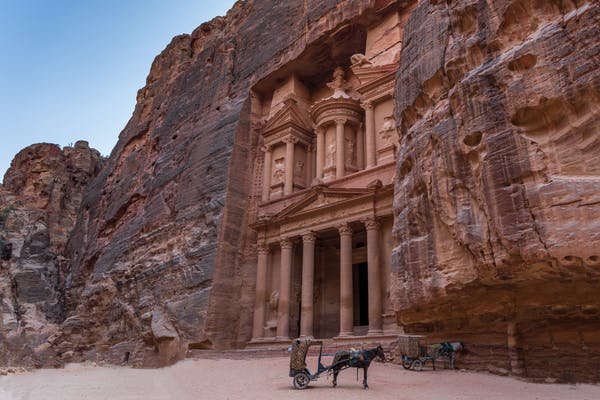An ancient city in Jordan, Petra was once the capital of the Nabataeans and later became part of the Roman Empire. Founded around 312 B.C., Petra rose to its height between 200 B.C. and A.D. 100, as an important center of trade and religious activity that attracted merchants from all over the world. In fact, it’s been considered one of the Seven Wonders of the World since the time of Antony and Cleopatra! You can learn more about this magnificent historic site and landmark by reading on...

The Early History of Petra
Petra was once a thriving trade hub and cultural center. There are some writings left by ancient Egyptians that tell us how to travel in Petra.
Petra is famous for its rock-cut architecture, water channels and tombs. The site is one of the most dramatic examples of this kind of architecture in existence and it's a UNESCO World Heritage Site as well.
If you're interested in traveling to Petra yourself, be sure to book your trip well ahead of time.
The Rise of the Nabataean Kingdom
The Nabataean Kingdom was established in Arabia in 312 BC. However, it wasn't until centuries later that they were discovered by European travelers and their capital city of Petra became world renowned.
Petra is one of the most famous tourist attractions in Jordan today. It can be difficult to navigate through the city without a guide so be sure to use our How To Travel In Petra tips.
Roman Rule and the Decline of Petra
Petra was originally founded in what is now Jordan by Arab tribesmen in 300 BCE. The Romans took control of the city for a time and built several temples and monuments. When Roman rule declined, Petra fell into ruin. It was not until 1812 that the Western world discovered this ancient wonder buried deep in an impenetrable desert canyon. Today it is one of Jordan's major tourist attractions with over three million visitors annually and has been declared a World Heritage Site by UNESCO.
Modern day Petra
To visit Petra today you need to fly from Amman or Tel Aviv to Aqaba and then drive south. The road is four lanes wide and is well maintained with gas stations every 20-30 kilometers. There are also many buses that run between Aqaba and Petra. You can rent a car in Aqaba but it will be more expensive than in Tel Aviv or Amman. Petran taxis are also available for hire at a fixed price.
THANKS FOR READING MY BLOG.